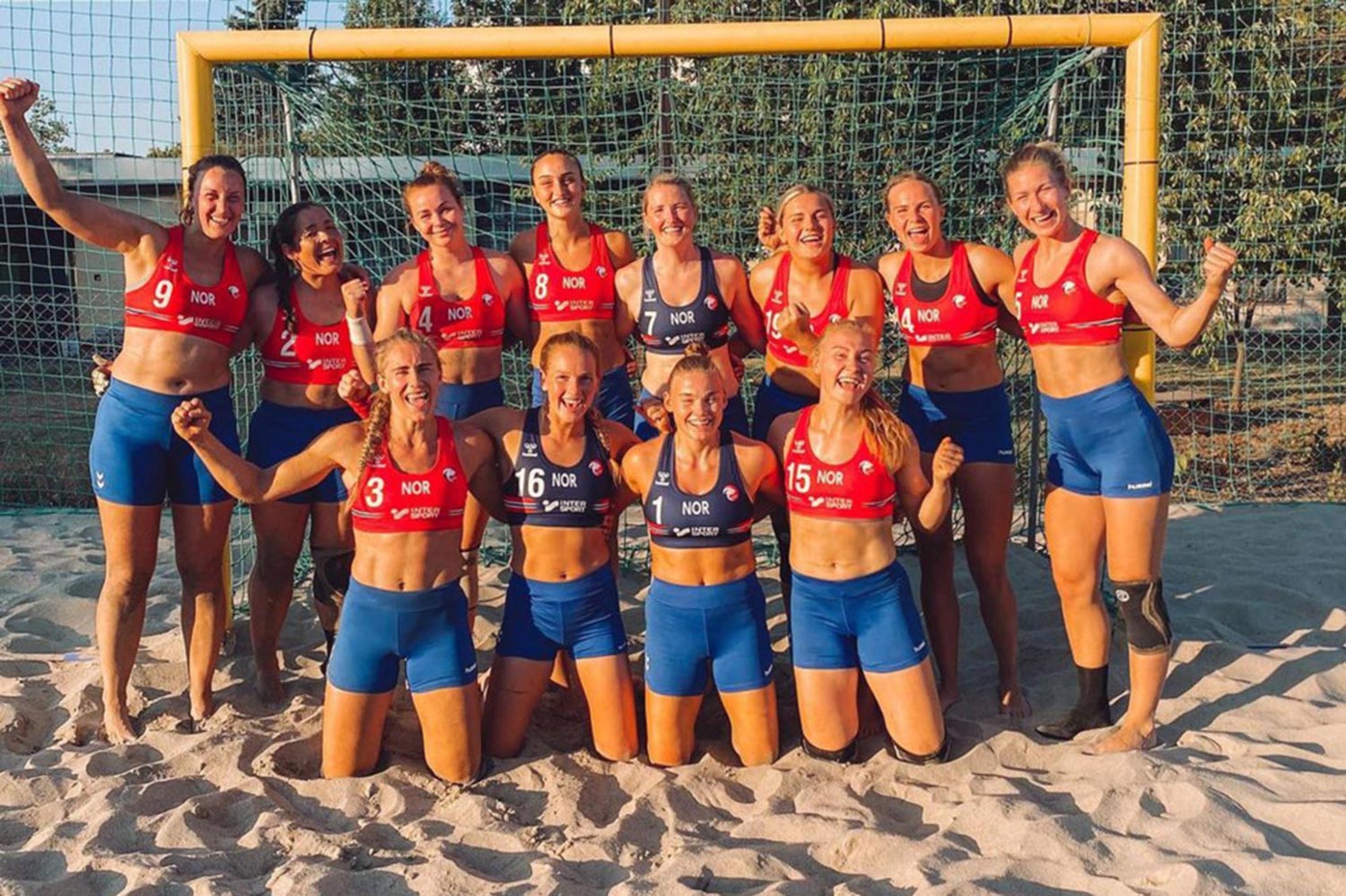Photo source: People Magazine. The Norwegian women’s national handball team poses in great spirits despite facing a fine for not wearing bikini shorts, which traditionally are part of the official handball uniform.
By Allie Cohen
Fashion is reflective of current socio-political environments; the Olympics is no exception. Since its launch in 1896, the Olympics has always been more than just a sporting event. It’s a way for the world to come together to showcase culture, pride for one’s country, and of course, the uniforms. Although the uniforms tend to be more part of the spectacle that is the Olympics, the recent fine on the Norway women’s national handball team for not wearing bikinis highlights this indisputable fact: the Olympics were built for men and have remained an entity that favors men.
Where It All Started
The first-ever written accounts of an Olympic-like event dates back to 776 B.C. However, it’s believed that Hercules, son of Zeus, and Alcmene, a mortal woman, started the Olympics, which would set the advent of the Olympics to around the end of the 6th century B.C. The ancient Olympics were held every four years in Olympia, hence the name Olympics, between August 6 to September 19, to commemorate the greek-god, Zeus. During these Olympics, only “freeborn male citizens of Greece” were allowed to participate, and “married women were prohibited from attending the competition.”
Following the Roman Empire’s overthrow of Greece, the ancient Olympics dwindled both in “standards and quality,” and eventually stopped altogether, after Emperor Theodosius, I barred all pagan festivals in A.D. 393. The Olympics we know today were resurrected in 1896 by Baron Pierre de Coubertin, a French aristocrat who took his passion for sports and education both to France and to the modern-day Olympics.
On Olympics.com, you’ll see a tantalizing story in which Coubertin helped open up sports and the Olympics to “every man, woman, and child,” as well as a story in which the Olympics assists in “uniting all nations in friendship and peace through sport in the world’s greatest celebration of humanity.” History tells a different story. The initial aim for launching the Olympics, which remained largely under the direction of Coubertin, was to “develop an international sporting festival for the youth of the world based on the ideas and ideals of the ancient Olympic Games;” this indicates exclusivity as the ancient Olympics only allowed “freeborn male citizens of Greece” to participate in the events. Additionally, the 16 original members of the International Olympics Committee (IOC) were all men, and the basis for them initially coming together was “to promote the cause of amateur sport with which ‘gentlemen’ of the early 20th century were associated.” Finally, if you weren’t yet convinced that the Olympics we know today were intended to be exclusive, Coubertin explicitly stated that “an Olympiad with females would be impractical, uninteresting, unaesthetic, and improper.”
Where We Stand Today
Undeniably, Coubertin was not a proponent of female participation in the Olympics; although the amount of female-to-male participation on the field is fairly equal today- the Tokyo Olympics consisted of 49% female athletes – off the playing field, Coubertin’s precedent still has an impact. Specifically, “women were not allowed to compete in every sport until 2012, and it was not until 2014 that the I.O.C.’s planning agenda included working ‘to achieve 50 percent female participation in the Olympic Games. Today, the IOC is only 37.5% female, and only 33.3% of women are on the executive board. Issues with this lack of representation can be seen in the Tokyo Olympics, where Olympic athletes who were new mothers were banned from bringing their babies to the Games due to concerns related to Covid-19, presenting a unique “challenge for that nursing their young children.” Issues stemming from the lack of representation of females on the IOC also extend to uniforms.
While people may be surprised to see such blatant sexualization of female athletes in 2021, the history of the relationship between women and the Olympics, both on and off the field, would show the contrary. For instance, during the 60s and 70s, ceremonial outfits typically resembled military uniforms. This is because soldiers were prime candidates for Olympic athletes – as they “had time to practice to compete, without getting any compensation” (Goldblatt). On the other hand, women wore uniforms that largely resembled flight stewards: in other words, “so while the men’s outfits were martial, the women’s outfits made them look like they were in a subservient role.”
If you want to learn more about how sexism is incorporated into Olympian’s uniforms, check out this article here.
Throughout history and continuing to today, the world has influenced, and in some ways forced, women to maintain subservience to men. In other key areas of society, namely the workforce, gender inequality still very much so exists. Moreover, by looking at the work industry, which is just one of many areas in which sexism still disproportionately affects women, we see on a broader scale how sexism still exists within our society. Keeping in mind then that fashion is reflective of socio-political environments, the fact that sexism still exists in other areas of society (work), and the history of the relationship between women and the Olympics, Norway’s beach handball debacle, along with several other recent instances, such as what happened with Olivia Breen, reflects just how far, and just how much farther, we have to go to achieve a truly gender-equal Olympics and society.

